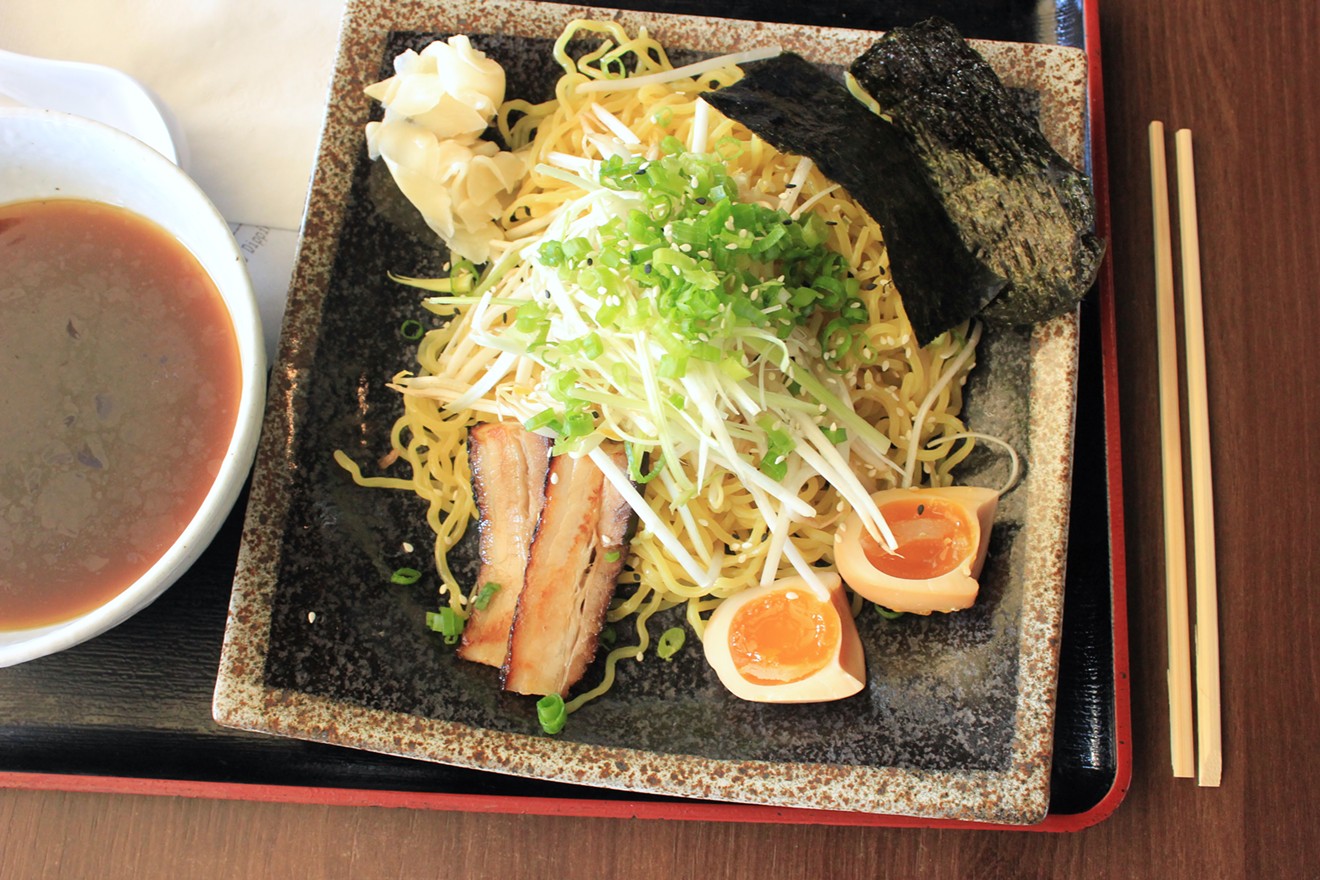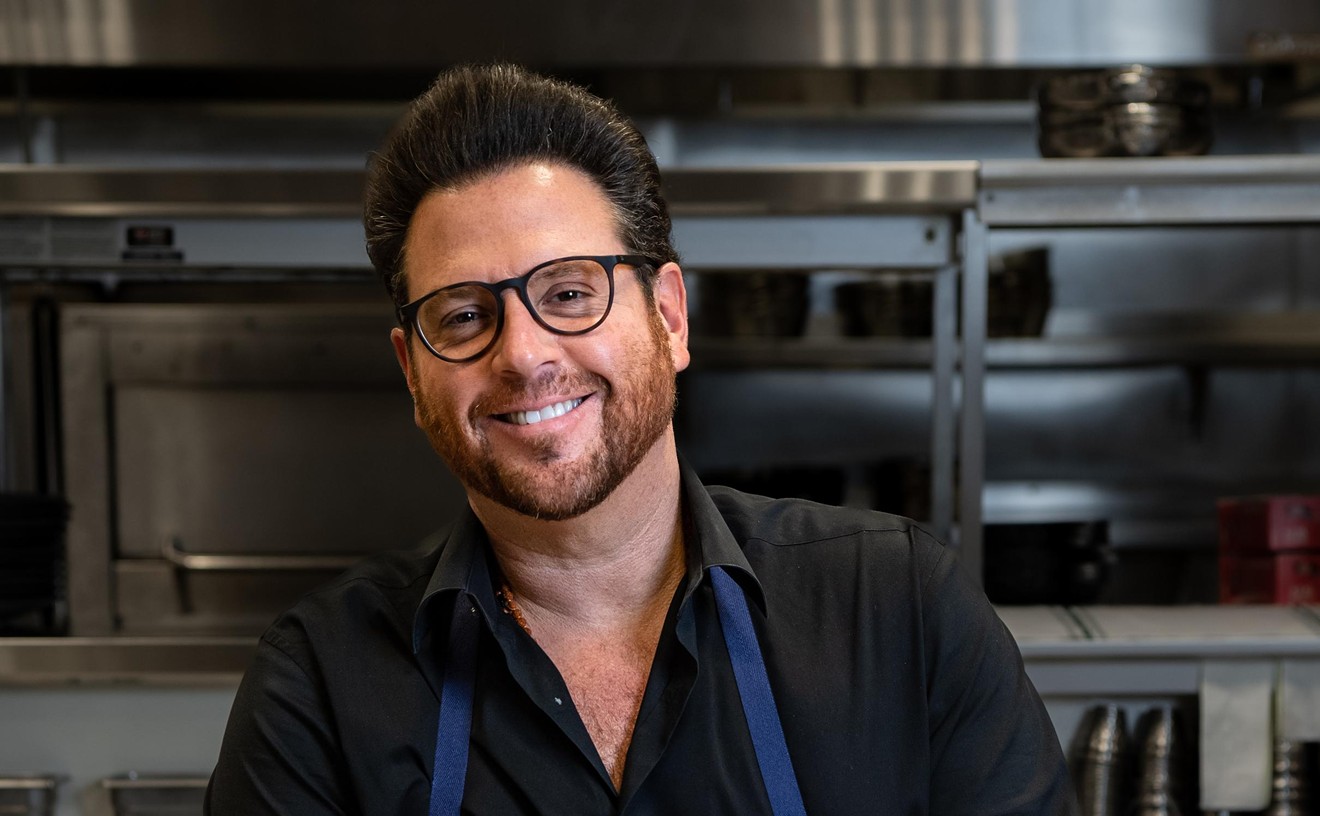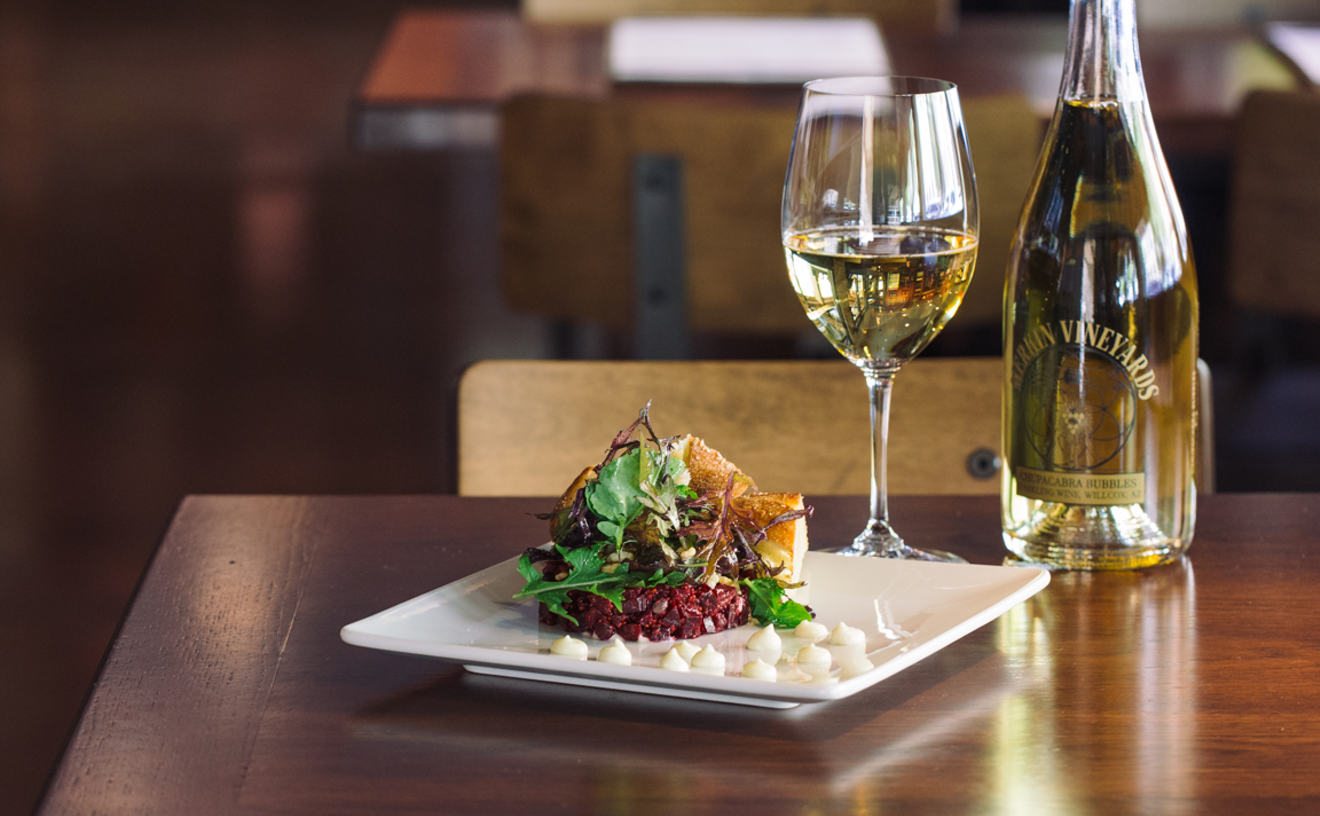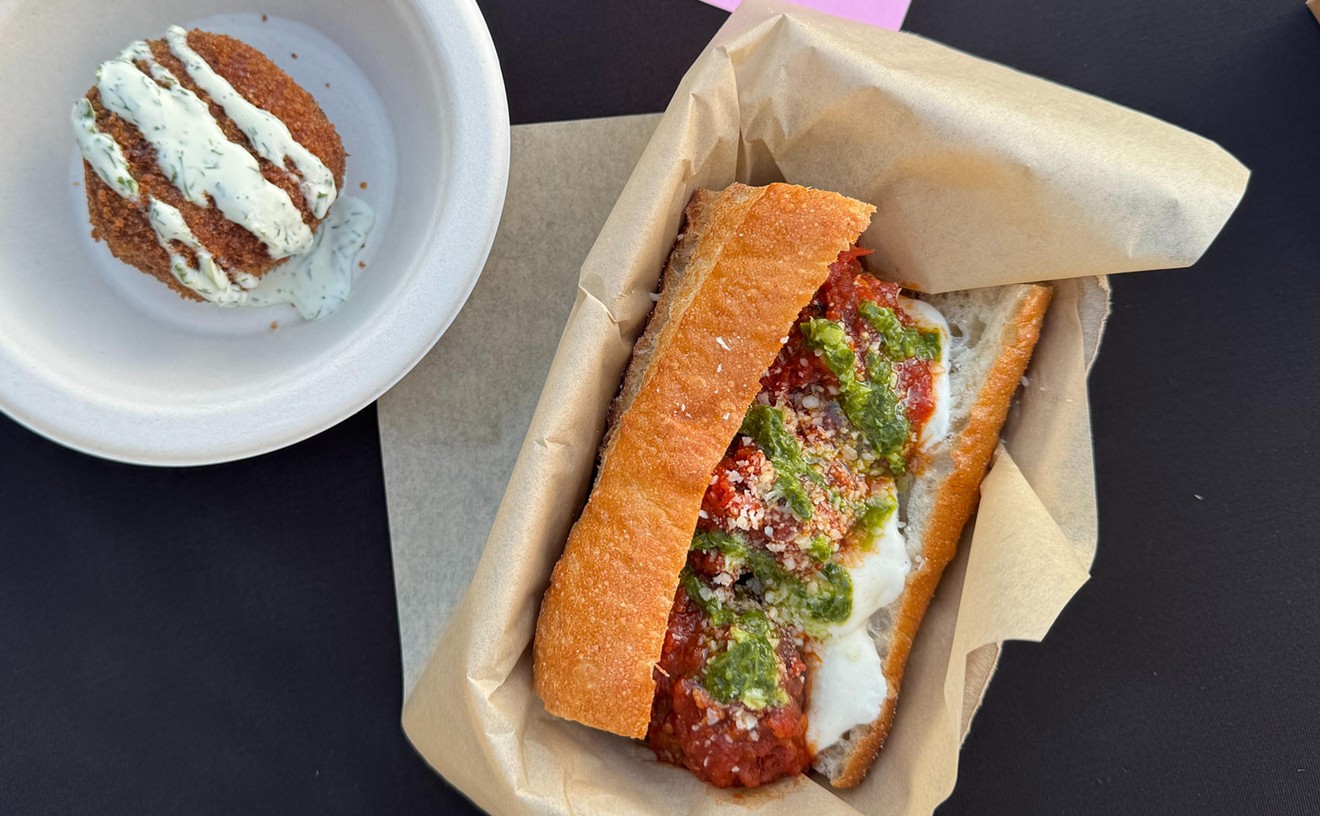Hot Noodles, Cold Sake serves cold noodles during hot months. These cold noodles are tsukemen, an offshoot of Japanese ramen that sees the noodles and their bowl-fellows separated from the bowl, laid aside, and dipped, pinched between chopsticks, back into a yawning bowl of broth.
Josh Hebert, formerly of Posh and presently of Hot Noodles, Cold Sake, serves tsukemen cold. Cold broth. Cold noodles. Cold everything else. (And, yes, cold sake.)
Tsukemen is a newer way of serving ramen (not new, just newer). The experience of eating Hebert's tsukemen is different from that of eating conventional, hot ramen. You feel, as you submerge heap after heap into the tea-colored broth, a closer connection to the noodle.
With hot ramen, you slurp the noodles and broth up at once. It all vanishes in a slippery rush. With this tsukemen, the noodles have more pushback. You rend your teeth through their starchy walls, and you get a slightly longer, more intimate experience with each strand, coming away with a more complete feel for their inner chew.
Hebert and his team, which usually includes general manager Brian Webb, drip cold noodles with a touch of broth and pork fat. If you slurp the noodles plain, you may taste a faint suggestion of something beyond the essence of the noodle itself.
Dunk those noodles in dipping sauce, and that distant suggestion magnifies to the 10th power. The dipping sauce is ramen broth chilled. It has the same deep umami riptide as hot ramen, only it all seems gentler in the absence of heat. These cold noodles are lighter, more refreshing.
Much of the refreshment comes from Hebert's toppings.
His choice of noodle companions for tsukemen overlaps with those of his shoyu bowl. These toppings tend to have clean flavors. Chopped green onions. Bean sprouts. A pile of ginger that isn't the extraterrestrial matter you receive at most sushi restaurants, but ginger that scrapes the heights of what ginger can be, alive and warmly kicking.
When it comes to ramen, even I, a dude pulled to noodles like Gollum to the ring, have to admit that the egg is the best part. I don't know how Hebert's could be any better. He does a five minute boil before curing in sugar, soy, dashi, mirin, and sake for three days.
Separately, or together when dipped, the components of this tsukemen make for a nice noodle dish. This isn't a bombastic repast that will rewire your synapses or slap your head sideways, and that isn't its goal. The goal is a simple clean bowl of Japanese-style noodles.
Earlier this decade, I took a graduate class where we had a reading about desert nomads, Bedouins I think, who sipped hot drinks even in hairdryer temperatures. The point was that perhaps, against common sense, humans are actually better off ingesting hot things in hot times.
After having lived in Arizona for a year, in North Scottsdale, where town starts to thin to desert, I can happily report that both those nomads and that article writer are bonkers. You need cold things in heat.
For that, we have playful adaptions like this ramen.
Hot Noodles, Cold Sake. 15689 North Hayden Road, #127, Scottsdale; 480-432-9898.
Monday through Saturday 11 a.m. to 9 p.m.
[
{
"name": "Air - MediumRectangle - Inline Content - Mobile Display Size",
"component": "18478561",
"insertPoint": "2",
"requiredCountToDisplay": "2"
},{
"name": "Editor Picks",
"component": "16759093",
"insertPoint": "4",
"requiredCountToDisplay": "1"
},{
"name": "Inline Links",
"component": "17980324",
"insertPoint": "8th",
"startingPoint": 8,
"requiredCountToDisplay": "7",
"maxInsertions": 25
},{
"name": "Air - MediumRectangle - Combo - Inline Content",
"component": "16759092",
"insertPoint": "8th",
"startingPoint": 8,
"requiredCountToDisplay": "7",
"maxInsertions": 25
},{
"name": "Inline Links",
"component": "17980324",
"insertPoint": "8th",
"startingPoint": 12,
"requiredCountToDisplay": "11",
"maxInsertions": 24
},{
"name": "Air - Leaderboard Tower - Combo - Inline Content",
"component": "16759094",
"insertPoint": "8th",
"startingPoint": 12,
"requiredCountToDisplay": "11",
"maxInsertions": 24
}
]












